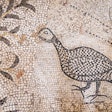
Last week I attended the North American Renderers Association’s (NARA) 89th Annual Convention in California. Among the world of information provided, sustainability was probably the most important issue – from my personal point of view.
NARA’s Sustainability Committee “explores ways for the rendering industry to leverage its advantages in sustainability by establishing social, environmental and economic metrics that can be used in a continuous improvement model or in other ways.”
All this is obviously related to the “original recyclers,” to the use of by-products from animal agriculture in the feed, fuel and other industries. It is something that people outside our sector have the foggiest idea exists. When I mention rendering to lesser mortals, they don’t know it exists or that the industry really participates in being more and more sustainable.
Matt Sutton-Vermeulen gave a presentation about the sustainability needs of NARA members, and among many interesting aspects, he mentioned the important challenge of gathering information and data, moving from secondary to primary data sources (from the supply itself). Level of transparency is something that needs to be determined, as well as good metrics.
I really liked what the speaker said: with sustainability, NARA has a good story to tell. This enables renderers to differentiate from the rest. But that’s why good numbers are needed, as well as the right time to convey the information.
Lucas Cipriano, president of the World Renderers Organization, questioned whether having no numbers rather that bad numbers was better. Good point. The industry needs to establish a good transparency strategy, to understand the variants and the needs in order to disclose information.
The rest of the animal production industries need to make note of this. Good numbers are needed. Maybe renderers will show us how.
What do you think?


















